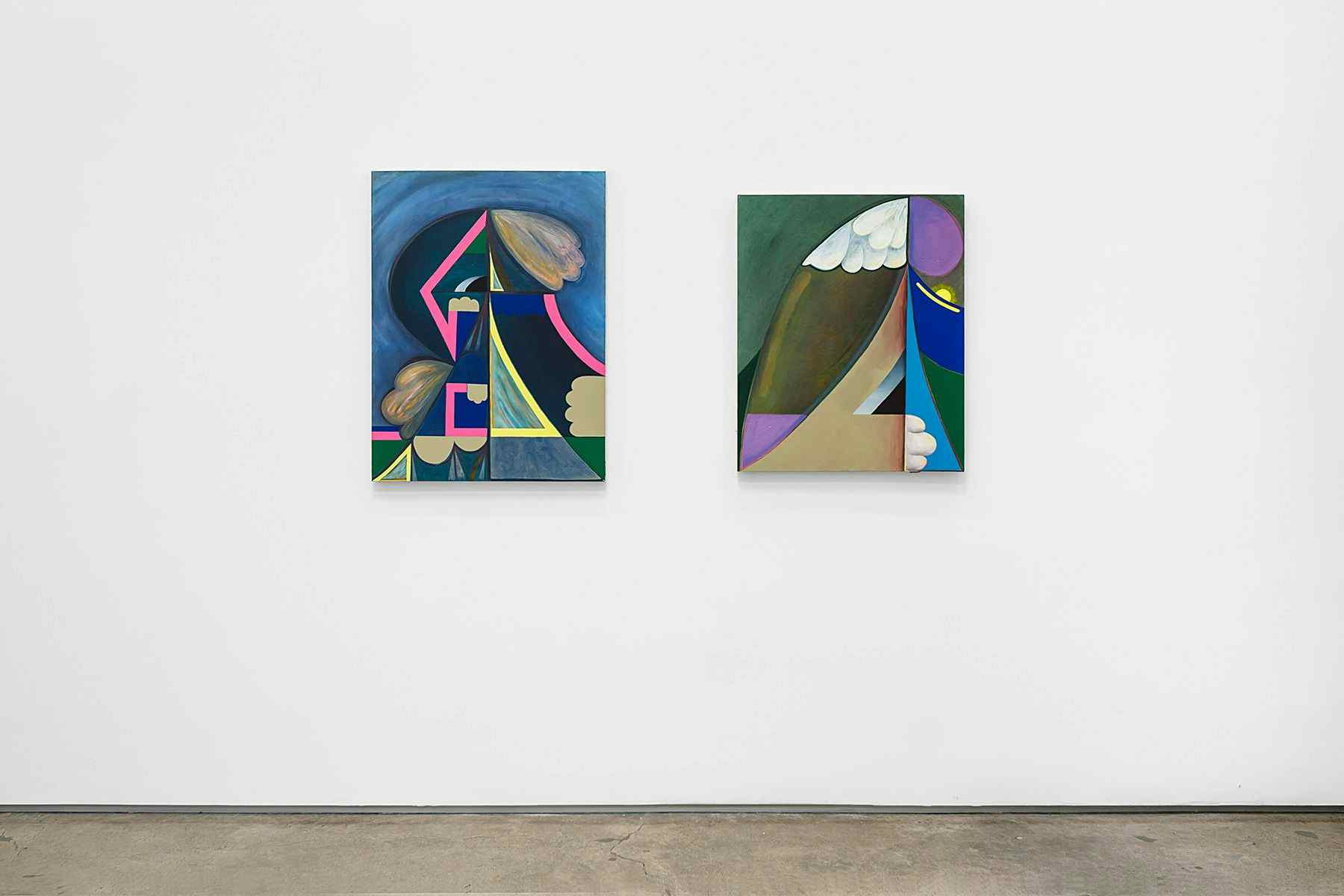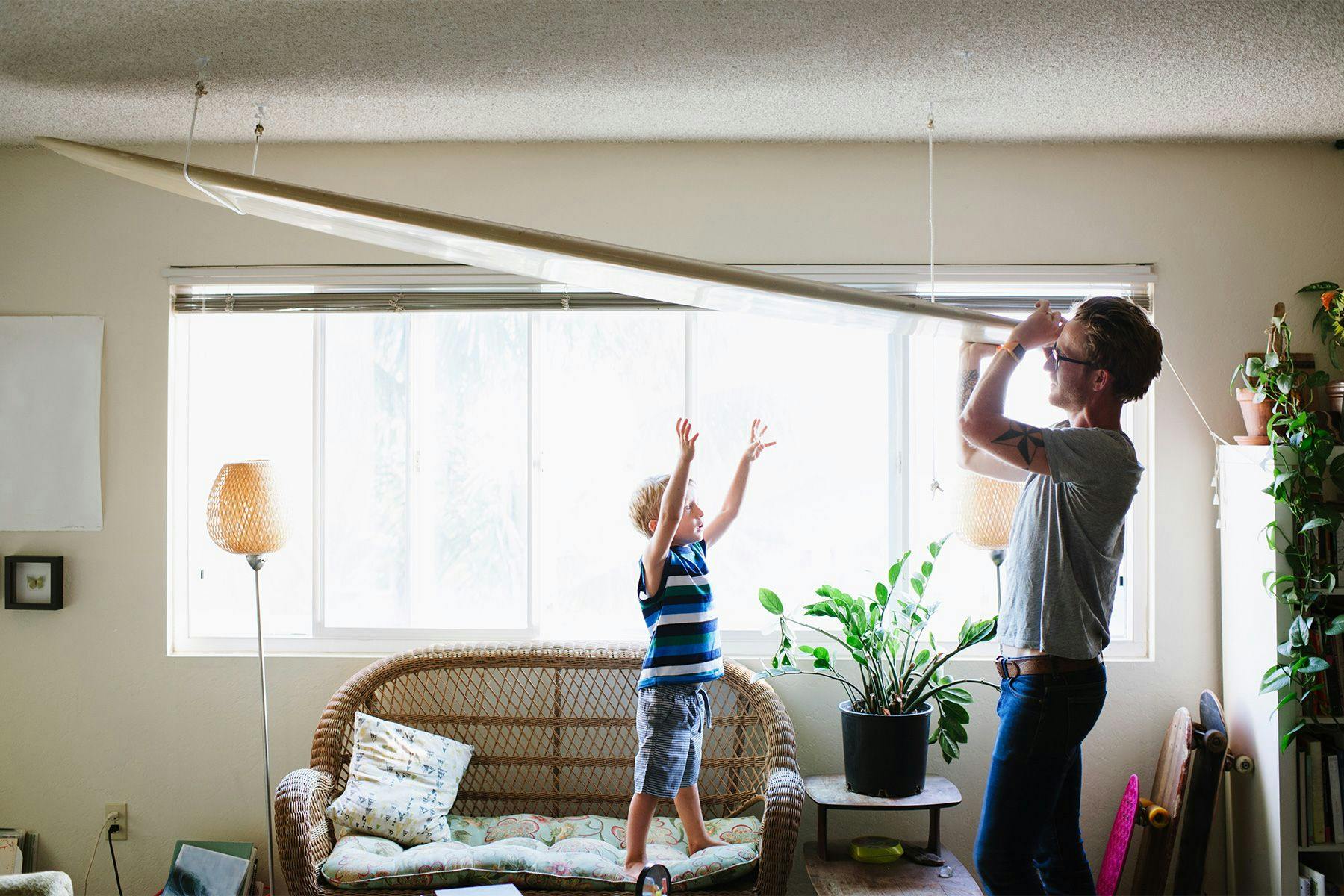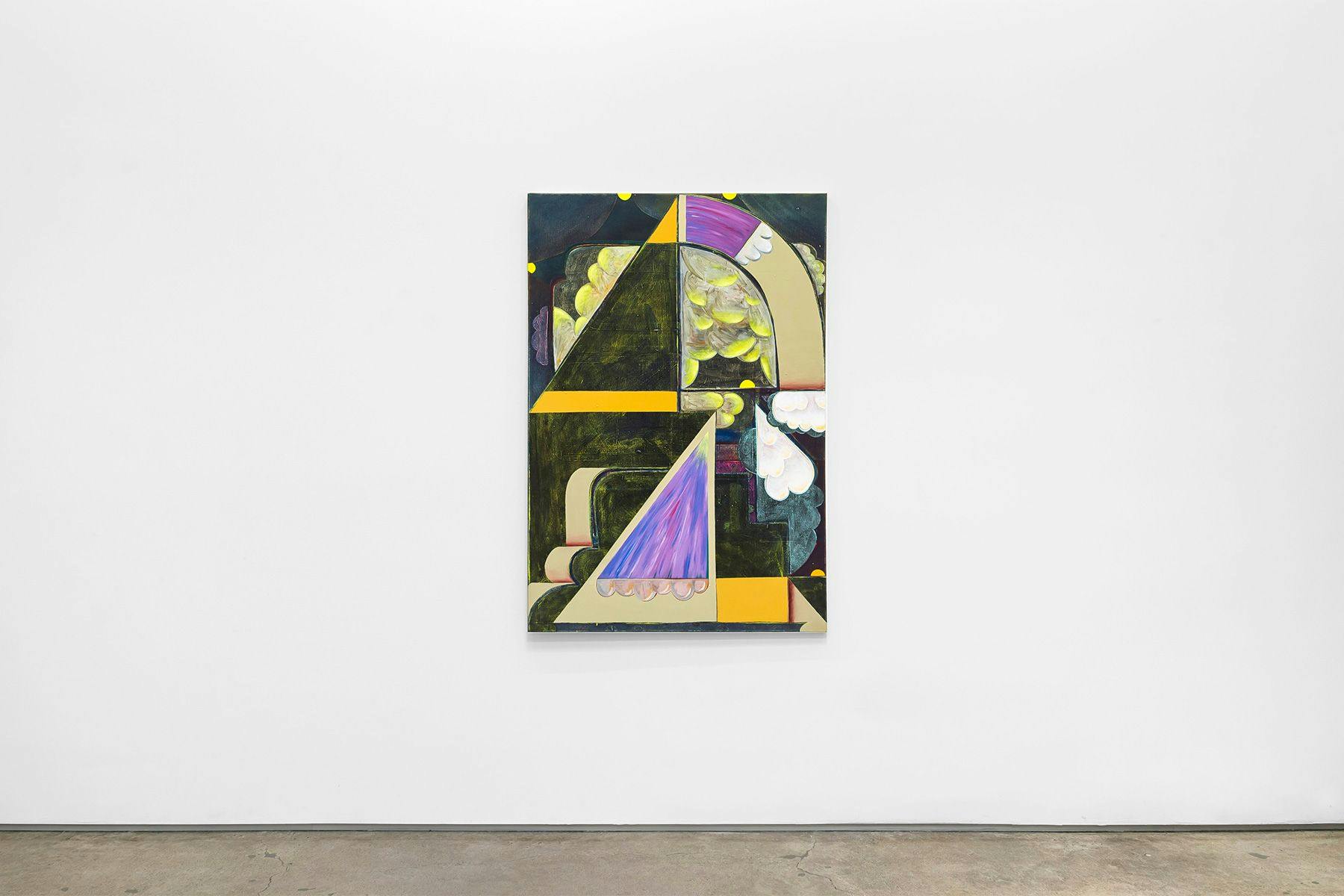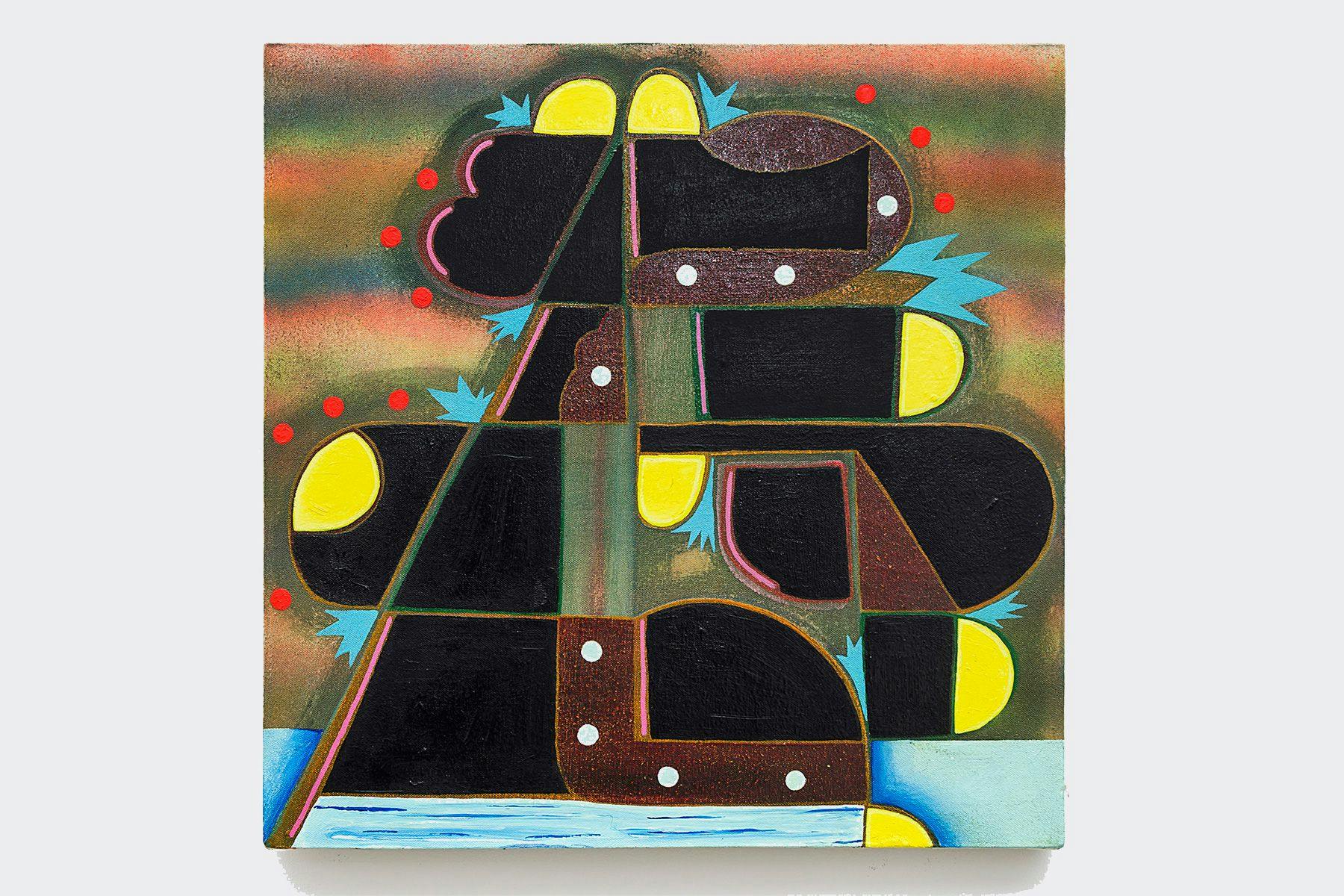Interviews, Surf cultureOcean Memories: The Art of Ryan Callis

“Surf Art” is often an incorrect label to hang on the work of many artists whose life as a surfer might sometimes influence their work. Ryan Callis is a surfer and an artist, but his critically acclaimed art stands separate and you’d be hard pushed to tell that he is an avid, daily, surfer from looking at the majority of his output. His most recent exhibition Ocean Memories, which opens this weekend at the Edward Cella Art and Architecture Gallery in Los Angeles, draws almost exclusively upon his experiences as a surfer however; Surf Simply caught up with Ryan between returning from a trip to Hawaii and the opening of the exhibition to find out more about how and why he’s finally brought the two together.

Ryan, you and your work straddle both the surf world and the art world; is it possible for you to imagine one without the other?
The art world and surfing are two huge aspects of my life but so are parenthood, husband-hood, my spiritual and faith life, and any other dimension of my life all get straddled when it comes to my artistic output so no, I could not imagine one without the other because they all feed into my art. I consider myself like a filtration system that reads, thinks, surfs, looks, loves, worships, and then all of these experiences get put in the mental blender and then get run through the filter, down to the hands, and then hopefully something awesome gets made and presented to the outside (of my brain) world.
How do they intersect?
As to how the art world and surfing intersect specifically, I don’t really know because the Art World is made up of a million smaller art worlds some of which have room for art about surfing or waves, but I personally find a lot of “surf art” to be cliché and pretty boring. But like a Raymond Pettibon surf drawing, or a Rick Griffen poster, have cache and weight in the art world in California, but maybe not in New York per se. A lot of LA artists of the past that have huge weight in the art world surfed, but did not make surf specific or referent art. Ken Price is an exception, and his work is amazing and worth looking at. But I personally get bored with the classifications of any of that stuff anyways. The intersection between art and life is how art gets made, but then we all feel the need to classify it and put it in a box, which sucks the life out of it.

Your Ocean Memories solo exhibition at the Edward Cella Art and Architecture gallery is a body of work solely inspired by the ocean and the waves; how did you approach creating these works?
So my Ocean Memories show came about from a series of paintings on paper that I started in 2014/2015 when we moved out to the desert in the Coachella Valley of Southern California for a short while. The surf is terrible in the middle of the desert but the landscape was otherworldly. I’ve lived most of my adult life blocks from the ocean, and I missed surfing everyday so I started making drawing, and eventually paintings of abstracted waves based on memory. Abstracted in that I wasn’t interested in realistically portraying a past ridden wave, but trying to remember how it felt, how it folded, how it crunched, how it thrust, and then to re interpret those energy flows, and structures. I was traveling a lot for work at the time and this mode of making became great, because the waves started taking on characteristics of the above mentioned other worldly landscape of the desert, or the landscape of rural Oregon, or mountainous Wyoming, or any where else I was going, and was getting tossed in the tumbler with these wave drawings, and then they would mix in color, structure, and shape, and making these super weird landscapey paintings. Dave at Edward Cella had been following these paintings on paper for the last few years and finally brought the idea of doing a show of wave paintings. He was interested in how the “wave paintings” influence, and are influenced by, the other artwork that I make.
Do you think that this representation of waves in your work was a necessary way for you to continue to engage with the ocean on a regular basis whilst away from it?
For sure the wave drawings and eventual paintings were/are a way to stay engaged with the ocean while away from it. My job has me travel on a regular basis and like I said, I started these after moving out to the desert for a year and in all these instances away from the water, I needed re connection. I need to be by or in the water or I start freaking out and these were a way to substitute a bit of that energy. Like heroin addicts going to methadone, the work keeps me sane, but it’s no real substitute for the real thing…

You’ve said in the past that because you can’t wear your glasses in the ocean, your experience is “kind of a blur”. What sort of an impact does this dilution of what to you, as a visual artist, is a key sense whilst in the waves have upon what you take away from your time in the water?
That’s a great question. So I feel like my senses have made up for my eyes when I surf. I can feel changes in the water in my fibers. It’s almost intuitive now so when a set is coming I’m generally ahead of everyone else in getting into position. So where I lack a crystal clear view, it’s like I internalize the waves I ride or paddle over or get sucked into. So when it comes to sitting around drawing or painting them, I am not stylizing the waves to fit an artistic “expression” as much as I am drawing them as I feel them in my memory. It’s super weird but so are waves. Their origins and structures and physical make up is super bizarre.

I understand that the works in this exhibition contain secret words and phrases that are coded into geometric forms and marks. Are these present in every painting in the series and did they form the basis or starting point of the individual pieces, or are they later additions?
Yes, there are always coded words and language in my work, but less so in the wave pieces. A few of them started with literally writing the phrase “be rad” in large letters on the canvas and the waves came out of the structure of those overlaid letters. But mostly they are formed as I saw them in my memory. Buuut, I do mostly use coded language as the structure for my work. It’s my own nerdy formula but I like be how, for instance, a phrase like “so be it” can be broken down into numeric values (s is the 19th letter of the alphabet so it’s represented by 19 pink dots, then o is the 15th letter so it’s represented by 15 poop emojis, and so on) which builds the structure to build the rest of the painting on. It’s never ending and really fun. But the waves need less of that foundation and feel more like making sculpture out of clay or something, like they just build themselves without needing help….
Have you made a conscious effort to avoid directly referencing your passion for surfing in your artwork up until now?
I think maybe it’s less that I’ve made a conscious effort to avoid referencing surfing in my work until now, because I am always making art that references surfing while making art that does not, but for sure my “surf art” I have considered as more for fun, and my non surf related art as my more “serious” art which I have been very conscious of. I don’t like that seperation personally, but I know it’s something to be aware of because my gallery would probably never have given my more straight forward, cartoony, guys and gals surfing art, room at the gallery because even if people liked it, it’s not considered “Art”. But if there is this “serious” intersection between waves and “serious” painting, then it can be presented in a gallery as “serious” fine art. But that’s cool too because it opens up and expands conversations and we all get to grow…I just try to play ball so that I can keep opening doors to present the things that I make. I try and stay fluid…

You owned and ran Canvas, a surf shop with an open art studio out the back that hosted artists, shows and art lessons. Can you tell us more about Canvas, how it came to be and what became of it?
Canvas Shop, which has been dead for a couple of years now, was my wife and my surf, vintage, record, book, art shop. It was the ultimate adventure. We, by total providence, got casted as a family, to be in the first post recession national Ford television ad campaign, and we made some sweet cash doing it. So we took that money and bought a dying marine canvas business, and learned to make boat covers, and anything else boat canvas related, and opened shop in Seal Beach California. We sold rad stuff out of the front, had art shows like Ed Templeton, concerts by Ray Barbee, Avi Buffalo, Josh Harmony, and all kinds of other awesome musicians and weirdos…But the giant sewing table and industrial sewing machines in the back made all the money. Crusty boat guys would walk past a group of hipster girls bikini shopping to drop off an armload of bird shit covered boat canvas to be fixed. Some surf buddies of mine joined ranks and we busted out the sewing and Tammy, my wife curated the front of the shop. It was bananas. Then we sold the canvas business and cleared out the back room and did art classes and open studio rentals for a year or so but that made less money but was even more fun. I did kids classes while their parents shopped, I did late night adult classes where I taught still life classes to local moms who always brought great wine. It was super romantic. And at the time I worked as the art studio assistant to the actor/comedian Jim Carrey so he paid a lot of our bills during that time. So much community, and crazy parties, and good friends. But, all good things come to an end in this Amazon world for brick and mortar shops, and we had to close shop eventually. It was great while it lasted though. And now I know how to make a boat cover….

You have a Master of Fine Arts degree from Claremont Graduate University and are a working artist and art teacher. Can you talk us through your life and career in the arts?
My life in the arts eh? Well yes, I got my MFA from Claremont Graduate U which is a very prestigious and expensive art program that was so worth the life of student loan debt I saddled on myself. It was amazing. We had our first child in my first month of school. I already had an art career going before school so I was a cocky guy, but having a kid whooped my ass into shape and made me an awesome and focused student. I produced paintings for two solo shows, crushed my classes, and still had time to be a pretty good dad and husband in those two years. When I was done with school I went to work doing art installation at a local museum and had a lot more interest in that then teaching. Teaching at university was great but it is a ton of out of class work and grading. I was getting offered a lot more art install jobs than teaching jobs so I followed that route and in doing so have worked for a lot of great curators, artists, galleries, and museums which has been way better from my “art career” than teaching would have been. I have a lot of behind the scenes access and opportunities. But my father is a life long art professor and he loves it. It feeds his art practice where I feel like it bled mine out…

You’ve just recently got back from Hawaii, and are producing a ‘zine to accompany the exhibition, based upon your experiences there. Will the influence of Hawaii be the basis of different work from that which you produce whilst at home in California? How and why is that?
The Hawaii trip I just took was more a family vacation than a research or art trip. But man was it amazing. Surfing where surfing was invented will sort of melt your brain. We were on the Big Island staying at Kahaluu Bay, which was the surf playground of kings and had that history and juju about it. But the work is too far along for the show to let a whole lot of influence in. But the waves were way different over rock and reef than the beach breaks or rocky point breaks that I’m used to in California or Baja. So that was messing with my head. I drew a bit there but mostly I was surfing or carting my kids around volcanoes and restaurants. But it was amazing and will no doubt surface in my art in the future. That island chain sticks to people long after they leave….